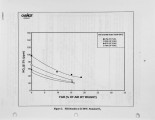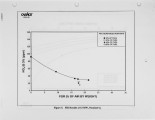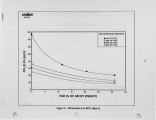| Title |
Demonstration of Fuel Injection Recirculation FIR for NOx Emissions Control |
| Creator |
Reese, James L.; Reddy, Vikram; Lange, Howard B.; Chang, Charles; Radak, Les J.; Youssef, Cherif F. |
| Publisher |
University of Utah |
| Date |
1994 |
| Spatial Coverage |
presented at Maui, Hawaii |
| Abstract |
Fuel injection recirculation (FIR) involves the dilution of gaseous fuels with an inert gas (such as flue gas or steam) prior to combustion for control of NOx emissions. This paper presents the results of the evaluation of the FIR process on a 45 M'\V gas-fIred utility boiler equipped with FGR to the combustion air. Steam was used as the fuel diluent. Testing was limited to a boiler load of about 50 percent to avoid the need for modifications to the burner nozzles. NOx reductions achieved with FIR ranged from 48 to 68 percent. NOx reductions with FIR combined with FGR ranged from 79 to 89 percent, approaching the level of NOx reduction that can be achieved with selective catalytic reduction (SCR). A comparison of the NOx reductions achieved with FIR with steam injection and FGR showed that FIR was more effective in terms of the relative heat capacity of the injected inerts. The capital costs of FIR as demonstrated in the Highgrove project are low because only minor boiler modifications are required to implement the FIR process. The use of steam as the fuel diluent results in relatively high operating costs, making this approach attractive for boilers with low capacity factors or short remaining lifetimes. With the development of techniques to allow the use of flue gas as the fuel diluent, FIR has the potential to provide comparable NOx reductions with low operating costs, making the FIR process attractive for a wide range of gas-fired boilers and heaters. |
| Type |
Text |
| Format |
application/pdf |
| Language |
eng |
| Rights |
This material may be protected by copyright. Permission required for use in any form. For further information please contact the American Flame Research Committee. |
| Conversion Specifications |
Original scanned with Canon EOS-1Ds Mark II, 16.7 megapixel digital camera and saved as 400 ppi uncompressed TIFF, 16 bit depth. |
| Scanning Technician |
Cliodhna Davis |
| ARK |
ark:/87278/s6zg6vvv |
| Setname |
uu_afrc |
| ID |
9466 |
| Reference URL |
https://collections.lib.utah.edu/ark:/87278/s6zg6vvv |















